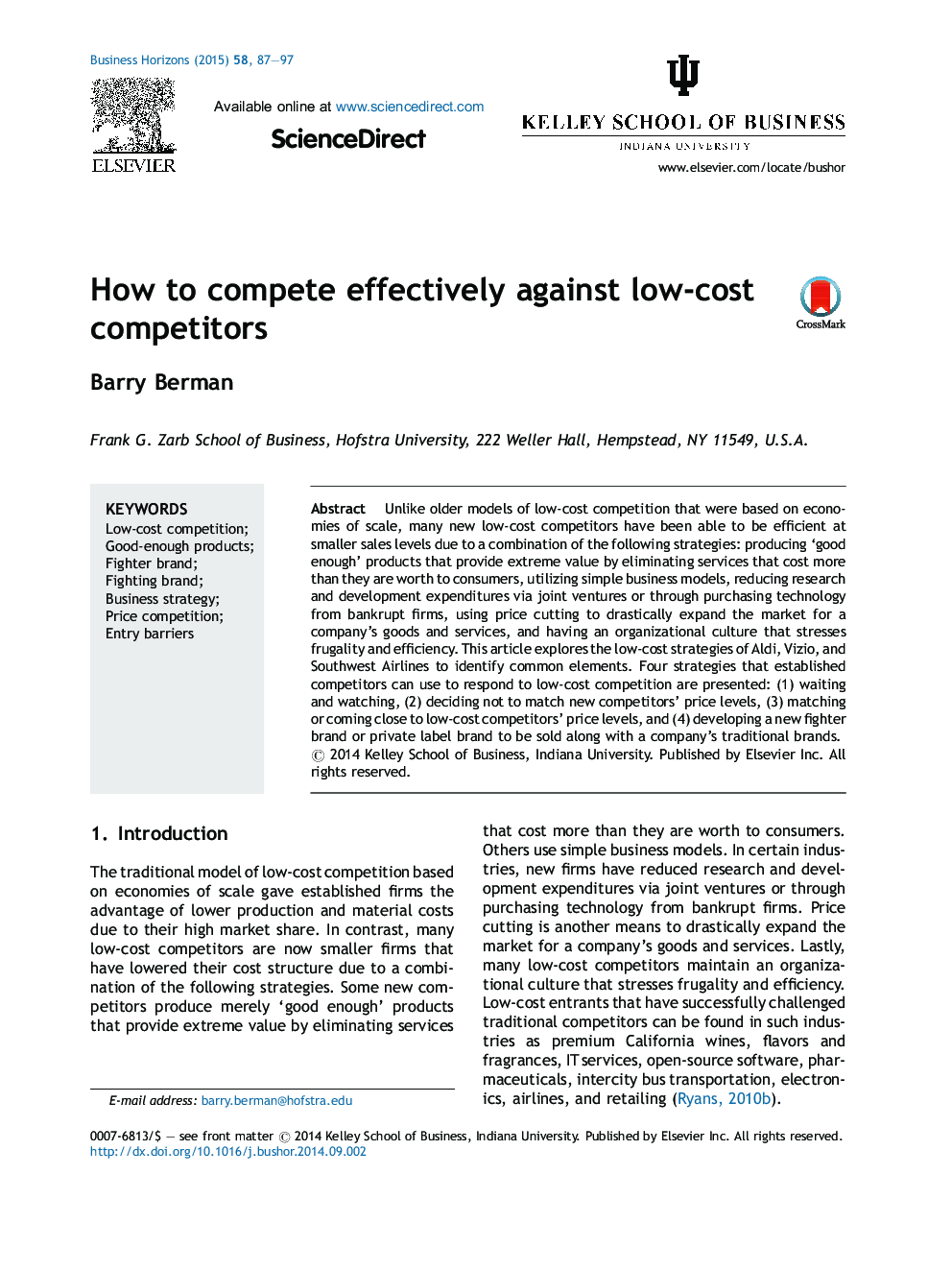| Article ID | Journal | Published Year | Pages | File Type |
|---|---|---|---|---|
| 10491118 | Business Horizons | 2015 | 11 Pages |
Abstract
Unlike older models of low-cost competition that were based on economies of scale, many new low-cost competitors have been able to be efficient at smaller sales levels due to a combination of the following strategies: producing 'good enough' products that provide extreme value by eliminating services that cost more than they are worth to consumers, utilizing simple business models, reducing research and development expenditures via joint ventures or through purchasing technology from bankrupt firms, using price cutting to drastically expand the market for a company's goods and services, and having an organizational culture that stresses frugality and efficiency. This article explores the low-cost strategies of Aldi, Vizio, and Southwest Airlines to identify common elements. Four strategies that established competitors can use to respond to low-cost competition are presented: (1) waiting and watching, (2) deciding not to match new competitors' price levels, (3) matching or coming close to low-cost competitors' price levels, and (4) developing a new fighter brand or private label brand to be sold along with a company's traditional brands.
Related Topics
Social Sciences and Humanities
Business, Management and Accounting
Business and International Management
Authors
Barry Berman,
